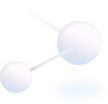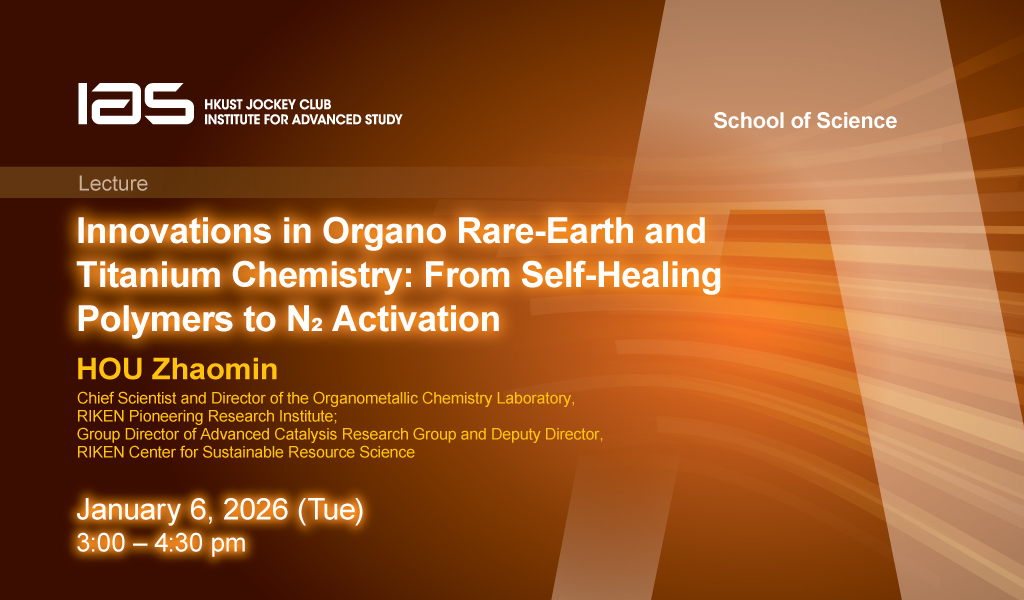更多科大概览
Speaker: Dr. Xihan CHEN
Orangization: National Renewable Energy Laboratory, USA
Hosted by: Professor Zhenyang LIN
Abstract
Solar energy represents one of the most important renewable energy sources. It can be converted to electricity and chemical fuels by photovoltaics and photoelectrochemical devices. The efficiency of solar energy conversion is governed by ultrafast carrier dynamics at solar energy conversion material interfaces. To understand such interfaces and develop next generation of solar energy conversion devices, ultrafast spectroscopic probes are needed. By developing transient reflectance spectroscopy to monitor the surface carriers that are within ~ 10 nm of the surface emerging solar cell materials, crucial parameters such as surface recombination and carrier diffusion are determined. Our results indicate the formation of 2D layered structure on Sn based perovskite solar cell surfaces that could effectively reduce surface recombination by 10-fold and increase carrier diffusion length to 2.5 µm. Also, by developing in-situ transient absorption/reflection and attenuated total reflection spectroscopy, ultrafast charge transfer dynamics and early reaction intermediates in a photo-driven water oxidation reaction are identified. Our results indicate an ultrafast 1.3 ps charge transfer and reaction intermediates formation time. The reaction intermediates will last for 8 and 60 µs for water oxidation reactions to proceed.
References:
About the speaker
Dr. Xihan Chen is currently a postdoctoral fellow at the National Renewable Energy Laboratory. His research focuses on identifying key factors that governs solar energy conversion efficiency and selectivity to provide guidance for the development of next generation renewable energy conversion materials. He obtained his Ph. D. degree from University of California at Berkeley, where he worked on understanding fundamental characteristics of (photo)electrochemical processes occurring in water oxidation.
Orangization: National Renewable Energy Laboratory, USA
Hosted by: Professor Zhenyang LIN
Abstract
Solar energy represents one of the most important renewable energy sources. It can be converted to electricity and chemical fuels by photovoltaics and photoelectrochemical devices. The efficiency of solar energy conversion is governed by ultrafast carrier dynamics at solar energy conversion material interfaces. To understand such interfaces and develop next generation of solar energy conversion devices, ultrafast spectroscopic probes are needed. By developing transient reflectance spectroscopy to monitor the surface carriers that are within ~ 10 nm of the surface emerging solar cell materials, crucial parameters such as surface recombination and carrier diffusion are determined. Our results indicate the formation of 2D layered structure on Sn based perovskite solar cell surfaces that could effectively reduce surface recombination by 10-fold and increase carrier diffusion length to 2.5 µm. Also, by developing in-situ transient absorption/reflection and attenuated total reflection spectroscopy, ultrafast charge transfer dynamics and early reaction intermediates in a photo-driven water oxidation reaction are identified. Our results indicate an ultrafast 1.3 ps charge transfer and reaction intermediates formation time. The reaction intermediates will last for 8 and 60 µs for water oxidation reactions to proceed.
References:
- Ultrafast probe at the interfaces of solar energy conversion materials Phys. Chem. Chem. Phys. 21, 16399-16407 (2019)
- Carrier lifetimes of >1 µs in Sn-Pb perovskites enable efficient all-perovskite tandem solar cells Science 364, 475-479 (2019)
- Selecting between two transition states by which water oxidation intermediates decay on an oxide surface Nat. Catal. 2, 820-827 (2019)
- The Formation Time of Ti–O• and Ti–O•–Ti Radicals at the n-SrTiO3/Aqueous Interface during Photocatalytic Water Oxidation J. Am. Chem. Soc. 139, 1830-1841 (2017)
- Detecting the oxyl radical of photocatalytic water oxidation at an n-SrTiO3/aqueous interface through its subsurface vibration Nat. Chem. 8, 549-555 (2016)
About the speaker
Dr. Xihan Chen is currently a postdoctoral fellow at the National Renewable Energy Laboratory. His research focuses on identifying key factors that governs solar energy conversion efficiency and selectivity to provide guidance for the development of next generation renewable energy conversion materials. He obtained his Ph. D. degree from University of California at Berkeley, where he worked on understanding fundamental characteristics of (photo)electrochemical processes occurring in water oxidation.
10月17日
10:45am - 12:00pm

地点
Room 2303, 2/F (Lifts 17/18), Academic Building, HKUST
讲者/表演者
Dr. Xihan CHEN
National Renewable Energy Laboratory, USA
National Renewable Energy Laboratory, USA
主办单位
Department of Chemistry
联系方法
chivy@ust.hk
付款详情
对象
Faculty and Staff, PG Students
语言
英语
其他活动

1月6日
研讨会, 演讲, 讲座
IAS / School of Science Joint Lecture - Innovations in Organo Rare-Earth and Titanium Chemistry: From Self-Healing Polymers to N2 Activation
Abstract
In this lecture, the speaker will introduce their recent studies on the development of innovative organometallic complexes and catalysts aimed at realizing unprecedented chemical trans...

12月5日
研讨会, 演讲, 讲座
IAS / School of Science Joint Lecture - Human B Cell Receptor-Epitope Selection for Pan-Sarbecovirus Neutralization
Abstract
The induction of broadly neutralizing antibodies (bnAbs) against viruses requires the specific activation of human B cell receptors (BCRs) by viral epitopes. Following BCR activation, ...
